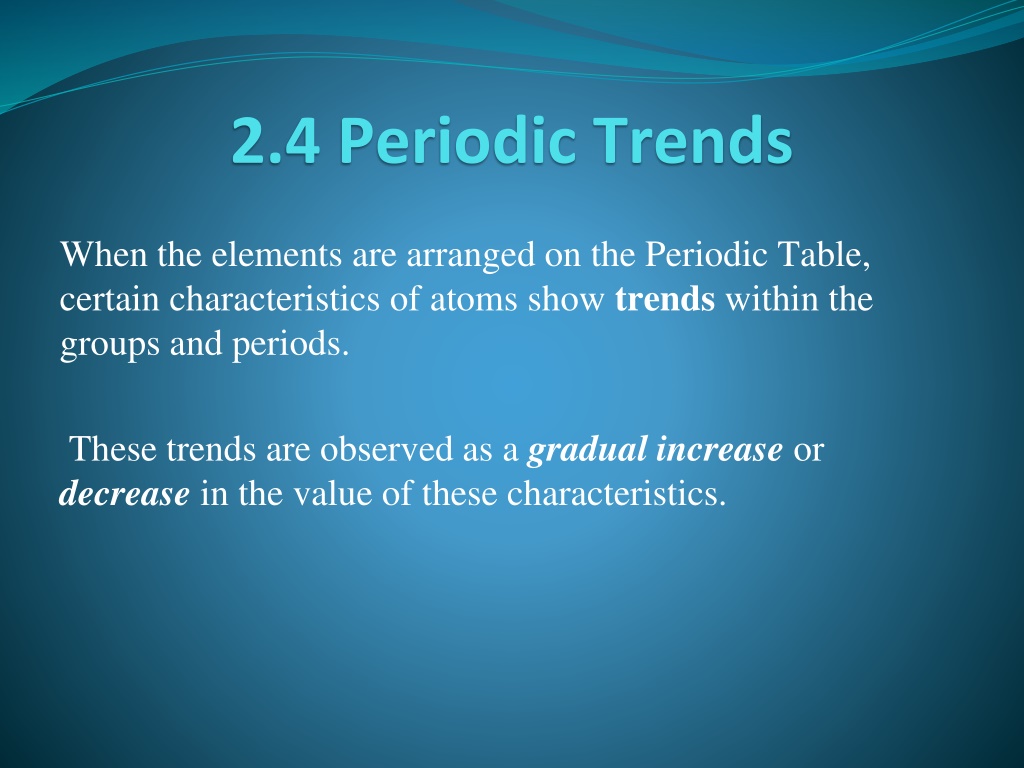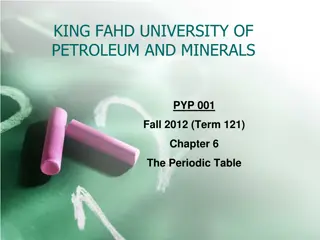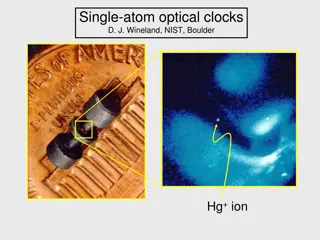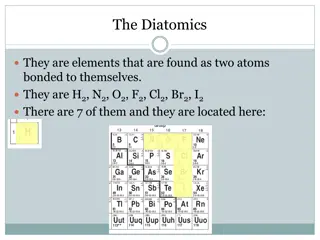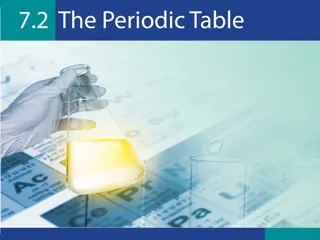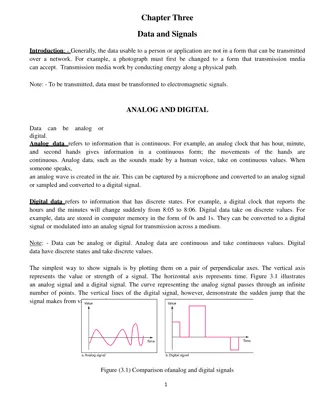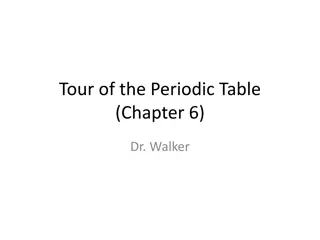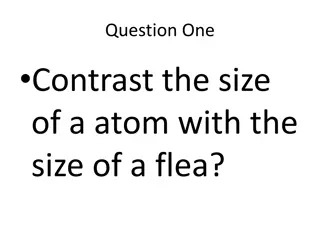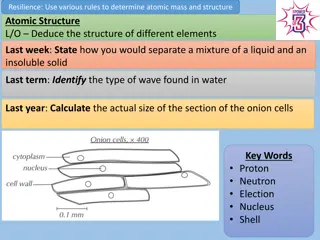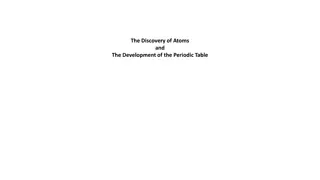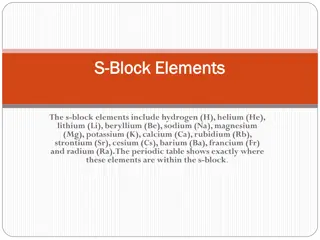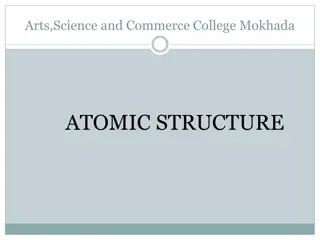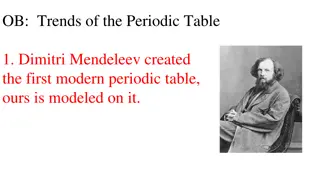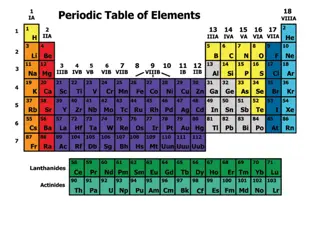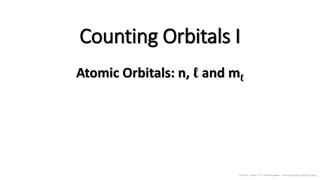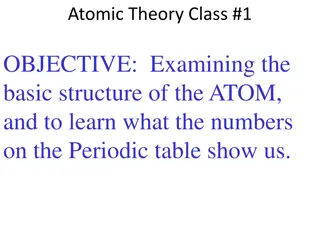Understanding Periodic Trends in Atomic Characteristics
Periodic trends in atomic characteristics such as atomic radius, ionization energy, ion size, and electronegativity are essential in understanding the behavior of elements. These trends are influenced by factors like the energy levels and the number of protons and electrons in an atom. The atomic radius increases down a group due to additional energy levels, while it decreases across a period as the increasing number of protons enhances the attraction between the nucleus and electrons.
Uploaded on Oct 02, 2024 | 0 Views
Download Presentation

Please find below an Image/Link to download the presentation.
The content on the website is provided AS IS for your information and personal use only. It may not be sold, licensed, or shared on other websites without obtaining consent from the author. Download presentation by click this link. If you encounter any issues during the download, it is possible that the publisher has removed the file from their server.
E N D
Presentation Transcript
2.4 Periodic Trends When the elements are arranged on the Periodic Table, certain characteristics of atoms show trends within the groups and periods. These trends are observed as a gradual increase or decrease in the value of these characteristics.
2.4 Periodic Trends The trending of these characteristics is dependent on two properties of atoms: 1. The highest energy level that contains electrons = each period adds another energy level around the nucleus 2. The number of protons and electrons in the atom = the more protons and electrons in the atom, the stronger the attractive force
2.4 Periodic Trends There are 4 characteristics of atoms that we will study trends for: Atom Size 1. 2. Ionization Energy 3. Ion size 4. Electronegativity
Trend #1 Atomic Radius Going Down a Group Why do atoms get bigger going down a group?
Trend #1 Atomic Radius Going Down a Group Why do atoms get bigger going down a group? Each period down adds another energy level around the nucleus, increasing the size of the atom
Trend #1 Atomic Radius Going Down a Group Why do atoms get bigger going down a group? Each period down adds another energy level around the nucleus, increasing the size of the atom Going Across a Period Why do atoms get smaller going left to right across a period?
Trend #1 Atomic Radius Going Down a Group Why do atoms get bigger going down a group? Each period down adds another energy level around the nucleus, increasing the size of the atom Going Across a Period Why do atoms get smaller going left to right across a period? The number of protons increases moving across a period, increasing the attraction between the nucleus and the electrons. This attraction shrinks the atom.
Trend #2 Ionization Energy The higher the ionization energy for an atom, the harder it is to remove an electron from the atom. The lower the ionization energy for an atom, the easier it is to remove an electron from that atom.
Trend #2 Ionization Energy Going Down a Group Why is it easier to remove electrons from atoms further down a group?
Trend #2 Ionization Energy Going Down a Group Why is it easier to remove electrons from atoms further down a group? The atoms are larger and electrons are farther from the nucleus. This makes the electrons easier to remove.
Trend #2 Ionization Energy Going Down a Group Why is it easier to remove electrons from atoms further down a group? The atoms are larger and electrons are farther from the nucleus. This makes the electrons easier to remove. Going Across a Period Why is it harder to remove electrons as you move left to right across a period?
Trend #2 Ionization Energy Going Down a Group Why is it easier to remove electrons from atoms further down a group? The atoms are larger and electrons are farther from the nucleus. This makes the electrons easier to remove. Going Across a Period Why is it harder to remove electrons as you move left to right across a period? The atoms are smaller moving right across the periodic table with electrons closer to the nucleus. This makes the electrons harder to remove.
Trend #3 Ion Size An ion is an atom that has lost or gained an electron(s).
Trend #3 Ion Size An ion is an atom that has lost or gained an electron(s). Metals have low ionization energies and lose electrons easily. Metal ions are smallerthan the original atom since they lost electrons. Nonmetals have high ionization energies and gain electrons easily. Nonmetal ions are larger than the original atom since they gained electrons.
Trend #3 Ion Size Even though the size of ions increases when moving from metals to nonmetals across a period, the overall trend for both metals and nonmetals is a decrease in ionic size.
Trend #4 Electronegativity Going Down a Group What is the trend for electronegativity going down a group?
Trend #4 Electronegativity Going Down a Group What is the trend for electronegativity going down a group? Electronegativity decreases moving down a group
Trend #4 Electronegativity Going Across a Period What is the trend for electronegativity going right across a period?
Trend #4 Electronegativity Going Across a Period What is the trend for electronegativity going right across a period? Electronegativity increases moving left to right across a period.
